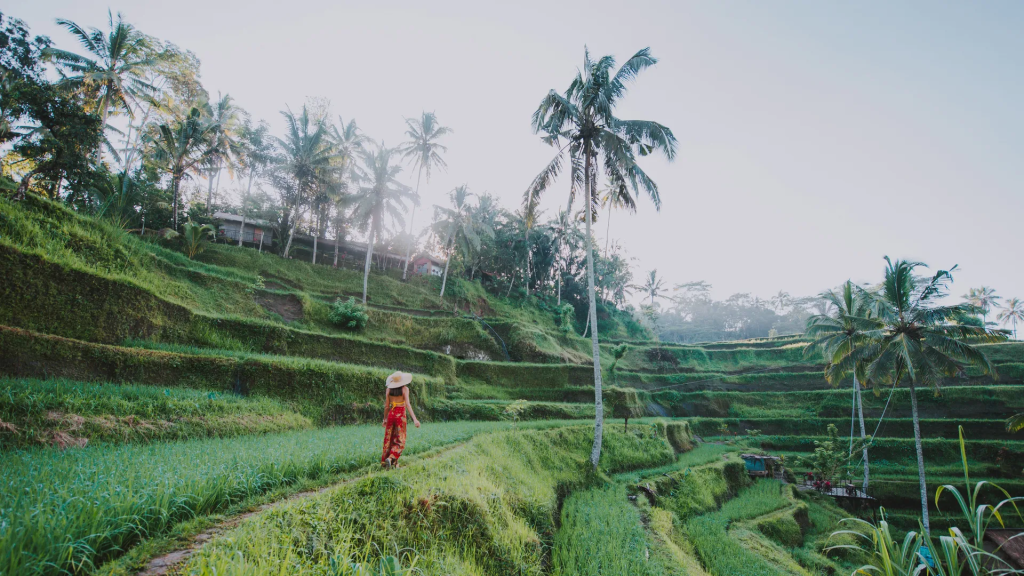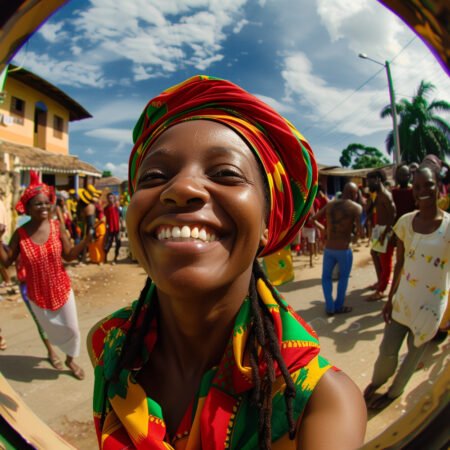22 Best Things to Do in Bali, Indonesia
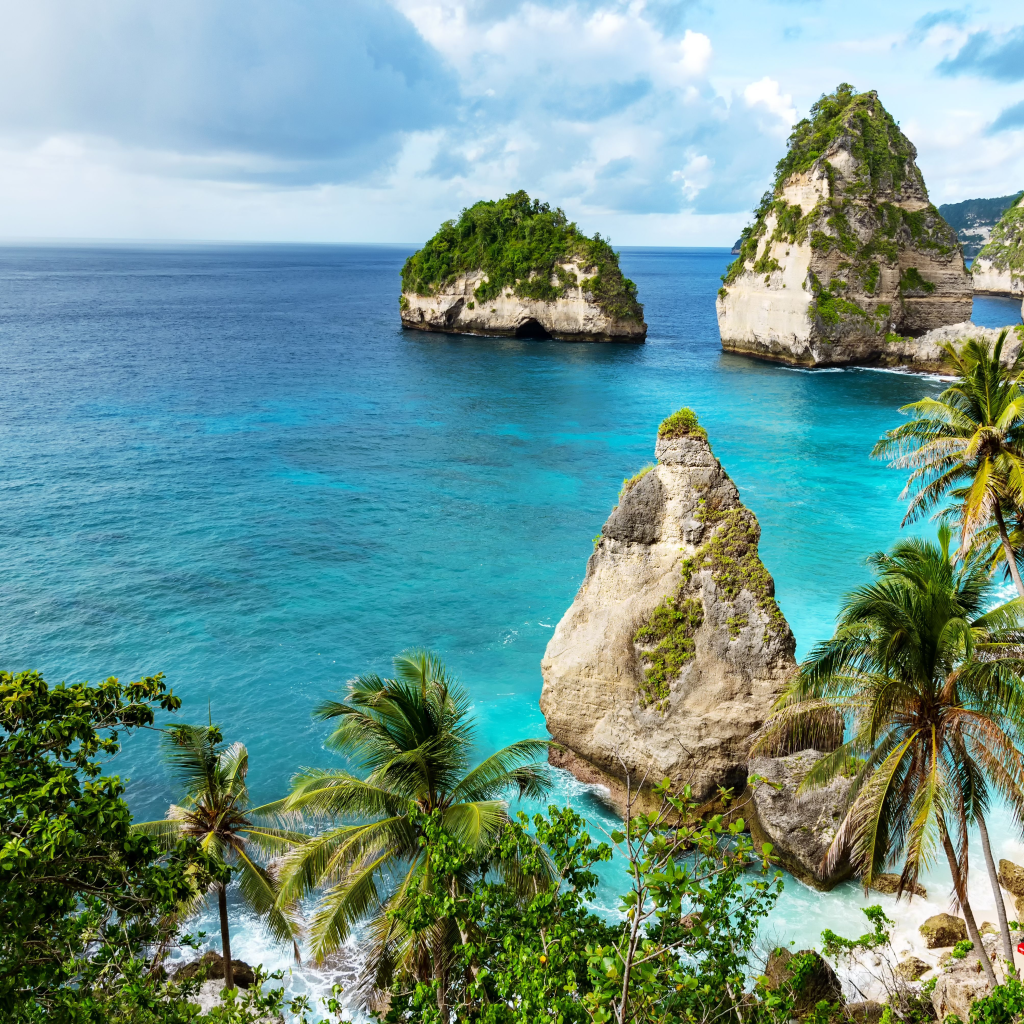
Bali is unique in that it combines surfing, spirituality, and sun-kissed sybaritic pleasure. On the Island of the Gods, new ideas wash in like waves, resulting in a beautiful concoction of civilizations and influences. A stay here could mean tropical brutalism at The Slow in Canggu or modern-Balinese bamboo pods at Ubud’s Bambu Indah. It could mean hanging out with Canggu’s clean-living nomads, Seminyak’s style-conscious surfers, or Ubud’s sophisticated crowd, who eat at Noma-esque Locavore and roll their eyes at the mention of Eat, Pray, Love. Regardless, everyone and everything is welcome.
With its lush tropical landscapes, world-renowned surf breaks, and iconic ancient Hindu temples, it’s easy to see why Bali is one of the most popular destinations in Southeast Asia. But don’t let the crowds deter you from exploring the Indonesian island’s cultural and natural treasures. Sites like the cliffside Uluwatu Temple and the sacred pools of Tirta Empul maintain their enchanting allure regardless of the visitor count. And if you’re willing to venture beyond the main tourist hubs, there are still hidden waterfalls and beaches to explore. If you’re looking for a guide to Bali’s top attractions—along with insider tips for avoiding the hordes and uncovering some lesser-visited gems—you’ve come to the right place. Here are the best things to do in Bali.
Every review on this list was written by a Condé Nast Traveler journalist cntraveler.com/contributor/julia-eskins who is familiar with the destination and has participated in that activity. When deciding what to do, our editors look for landmarks and experiences that provide an insider’s perspective on a region, while keeping authenticity, location, service, and sustainability in mind. This gallery has been updated with fresh material since its initial publication date.

John Hardy Ubud Workshop & Showroom
Art, nature and sustainability merge at John Hardy Kapal Bamboo Boutique & Workshop near Ubud. Founded in 1975 by designer and environmental activist John Hardy, the Bali-based brand is renowned for its intricate artisan-crafted jewelry inspired by nature and Balinese culture. The flagship boutique is housed in a striking bamboo structure, a masterpiece that embodies the brand’s eco-conscious ethos. More than just a showroom, it also serves as a studio for over 600 artisans, offering visitors the chance to see the jewelry-making process up close. With advanced reservations, visitors can enjoy guided tours of the workshop, jewelry-making classes, or even a family-style Indonesian lunch. The boutique is a destination for fashion-forward international travelers who appreciate artisan craftsmanship. Many visitors opt to book a tour or masterclass for a more immersive and personalized experience.

Jatiluwih Rice Terraces
The atmosphere here is peaceful and tranquil, with the vast, emerald-green landscape creating an almost mesmerizing effect. The cooler, fresher air at this higher elevation provides a welcome reprieve from Bali’s humidity. Thanks to its location away from Ubud, Jatiluwih remains blissfully free of large crowds, offering visitors a chance to experience Bali’s rural beauty in relative solitude. For those looking to explore Bali’s agricultural roots, capture stunning views, or enjoy some peace away from the crowds, Jatiluwih is an ideal spot. While it’s not as heavily visited as other areas, it’s a popular stop for those also exploring nearby waterfalls, hiking trails, and temples. With a relatively affordable entrance fee and the option to pair it with nearby natural attractions, it’s also a great choice for travelers wanting to make the most of their time and budget.

Suluban Beach
Hidden between dramatic limestone cliffs, this west-facing beach in Uluwatu is a haven for surfers, photographers, and adventure seekers alike. Reaching it requires descending a set of stairs through a narrow, cave-like gap in the cliffs—an effort that is more than rewarded by the beach’s breathtaking beauty. For the best experience, visit during low tide when the shore is more accessible. Keep in mind, however, that the currents can be extremely strong, so swimming or surfing here should be done with caution. As an entry point to Uluwatu’s main surf break, it’s a popular spot for surfers. Even if you don’t plan on catching any waves, you can still explore the coast and enjoy the views. Entry is free, and its proximity to other Uluwatu landmarks makes it a convenient spot for a dose of nature and adventure.

Campuhan Ridge Walk
Offering breathtaking views of Ubud’s lush hills and terraced rice fields, the Campuhan Ridge Walk is one of Bali’s most scenic and tranquil walking paths. Starting at Jalan Campuhan, just a short distance from the center of Ubud, the paved trail stretches for about 1.2 miles along a ridge above the Campuhan River, meandering past rural villages and dense jungle. Despite its proximity to town, the trail offers a peaceful escape from the hustle and bustle. In the early morning, you might spot locals out for their daily jogs or strolls, as well as farmers tending to the fields. Typically taking between one to two hours to complete, depending on your pace and how often you stop to take in the scenery, the walk is ideal for nature lovers and anyone wanting to experience the rural beauty of Ubud without venturing too far.

Pura Ulun Danu Bratan
Known as Bali’s “floating temple,” Pura Ulun Danu Bratan is a 17th-century Hindu-Buddhist temple set against a backdrop of lush green mountains and Lake Bratan, the second-largest lake in Bali. This UNESCO World Heritage Site is comprised of several shrines and pagoda-like structures, the most notable being the meru, a multi-tiered shrine dedicated to Dewi Danu, the goddess of water, lakes, and rivers, located on a small island on the lake. The architecture is classic Balinese Hindu design, with ornate carvings, statues, and intricate details. There are several smaller temples within the complex, each with a unique purpose, including shrines for offerings to other deities. If you’re wanting to combine culture with natural beauty on a trip through Bali’s mountainous heart, here, you can also explore the nearby Sekumpul, Gitgit, or Munduk waterfalls.
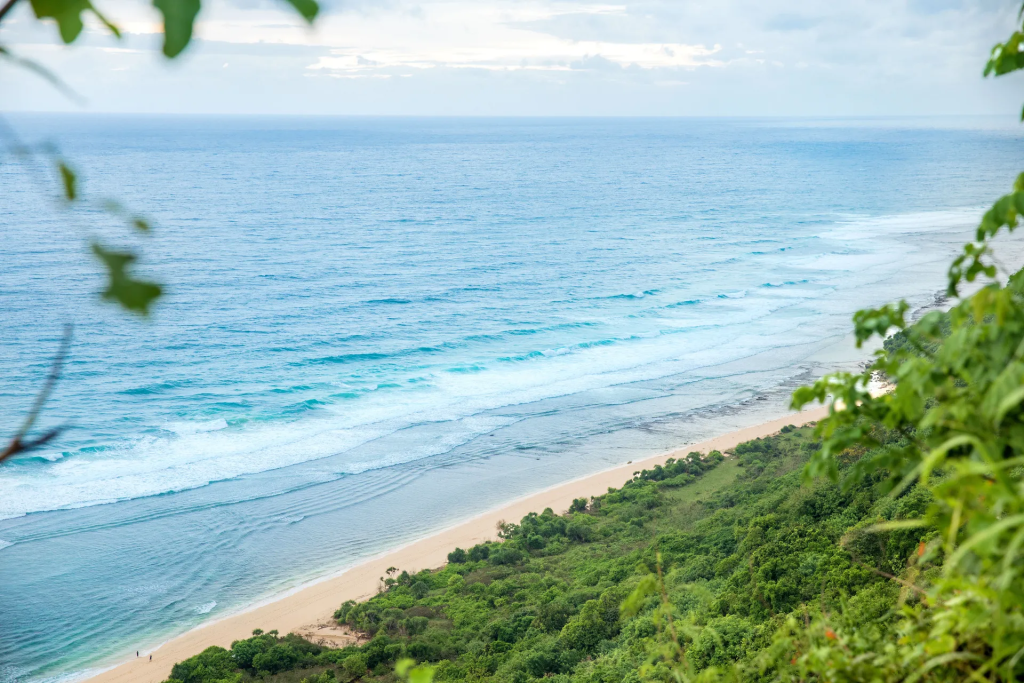
Nyang Nyang Beach
In Bali, the words “south” and “secluded” are rarely uttered in the same sentence, but Nyang Nyang Beach, in Uluwatu, indeed fills the bill. White sands, greenery-lined cliffs, and the astonishing absence of crowds await—if you’re dedicated enough to find it. Who knows, you might get lucky and have the spread all to yourself. There’s a reason this beach remains deserted: There are no billboard-sized signs along the road pointing the way, and when you do find the parking lot, it requires a 20- or 30-minute descent down a steep, jungled hillside with some 500 steps. If that hasn’t scared you off, the effort will be well worth it. If you’ve lamented how overrun Bali’s main beaches have become nowadays, Nyang Nyang is the respite you’ve been looking for.
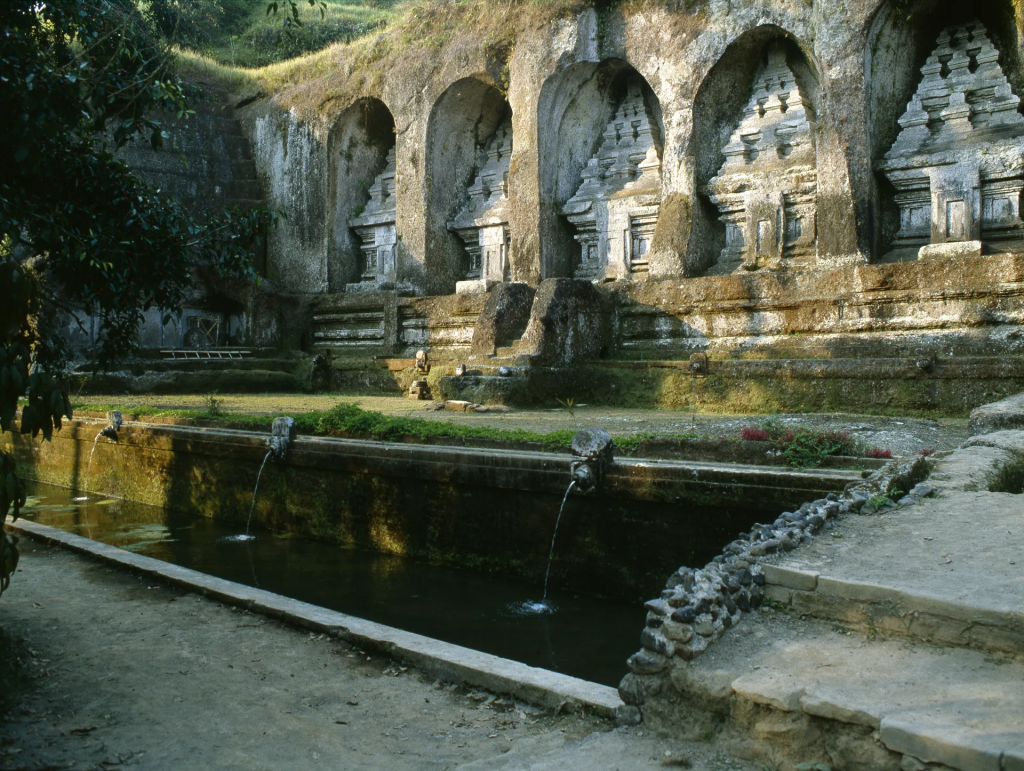
Gunung Kawi Temple
Gunung Kawi is an 11th-century complex of courtyards and cliff-carved shrines along the Pakerisan River, near Ubud. Theories and myths surround the ancient Hindu site—legend has it that a ferocious warrior named Kebo Iwa carved the intricate reliefs with his fingernails, for instance—which adds to its allure. Entry for adults cost around $4, and includes a sarong or sash for adherence to temple dress code. Enveloped by terrace rice paddies, natural springs, and verdant hills, the imposing cliff walls feature 10 candis (or shrines) positioned on different sides of the river. Add the lotus-filled ponds and traditional pavilions to the scene, and you have some of the most enchanted river valley settings on the island. Getting down to this jungle-enshrouded marvel will require some serious walking (there are some 300 steps), but the reward—especially in the quieter morning hours—is immense.
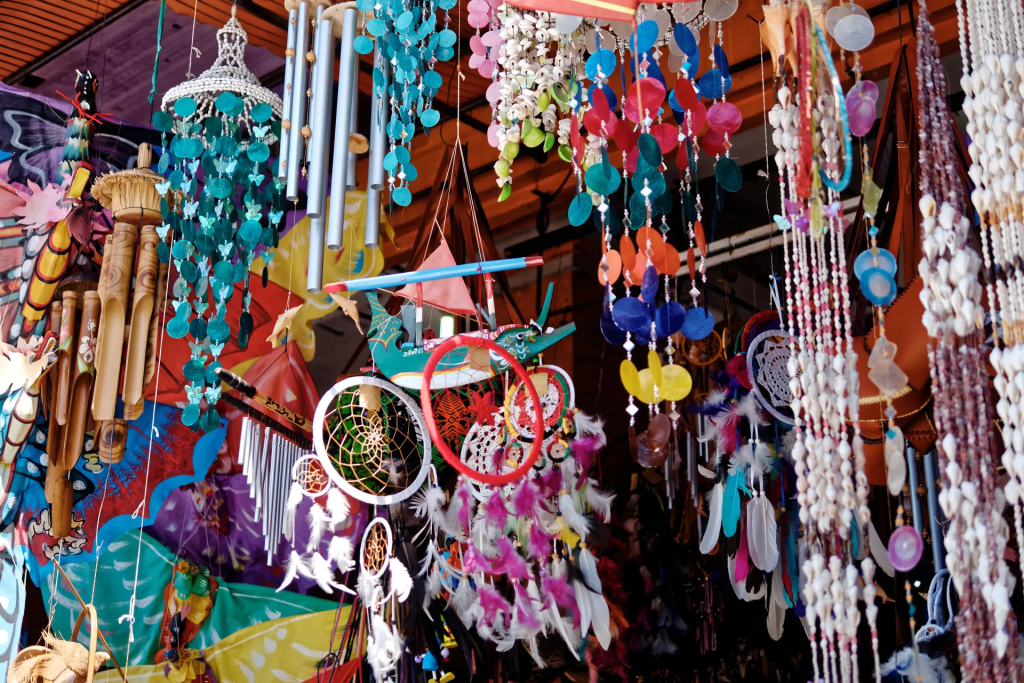
Sukawati Art Market
Sukawati Art Market is a cheaper and quieter alternative to nearby Ubud Market and other popular locales in southern Bali. There is an impressive array of handcrafted artworks for sale, from framed paintings of local farm life to large wooden sculptures of Hindu deities. Without the intimidating crowds, it’s an ideal place to flex your bargaining skills. There’s a sufficient variety and volume of goods to peruse: carved figurines, necklaces, artisanal bowls, canvas art, game boards, clothing, woven textiles, and so much more. For a more budget souvenir, we suggest vibrant patterned dresses and accessories for fashionistas; home goods like wooden chimes and natural wood kitchenware for the domestic-minded, and tote bags for all tastes. You’ll also rub shoulders with local Balinese who shop here regularly.
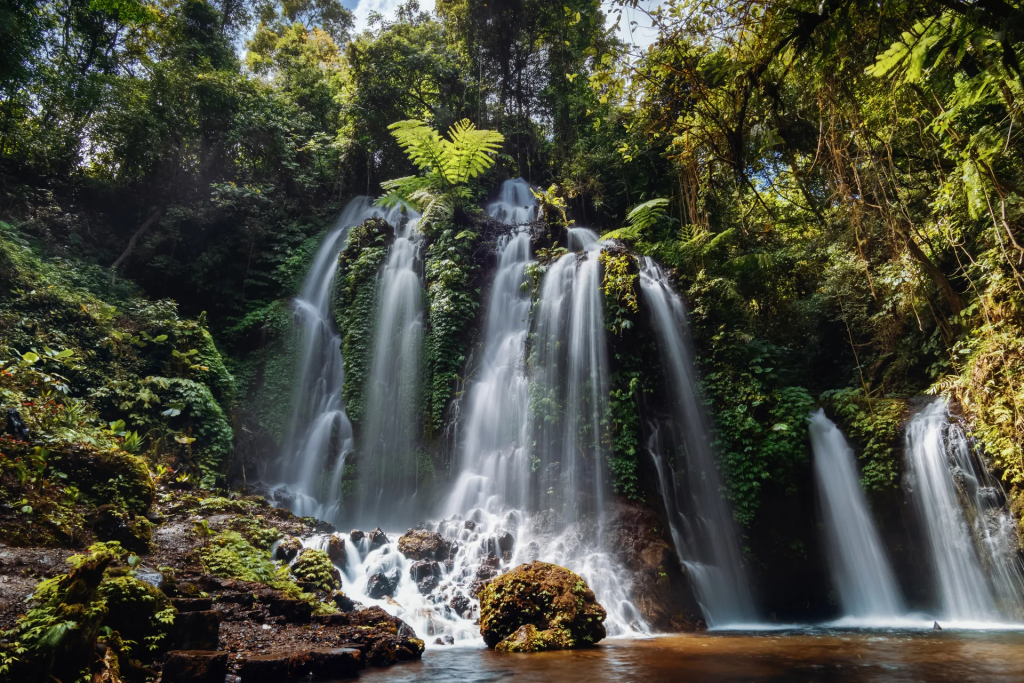
Banyu Wana Amertha Waterfall
Banyu Wana Amertha Waterfall, a lesser-known Northern Bali attraction, is a little hard to get to. You’ll need to drive at least 90 minutes from Ubud and take a winding, 20-minute hike through a banana plantation. But once you’ve completed the journey, you’ll be rewarded handsomely with a lush forest hiding a set of grand waterfalls that are somehow not overrun by crowds. You’re here for the falls and, depending on the season, you might be able to safely access all four. The main waterfall is the most spectacular—a verdant rock amphitheater with misty streams cascading down to a shallow pool. Come at an opportune time of the day—the earlier the better—and you might have this slice of paradise all to yourself. In Bali, it’s rare to find a splendid attraction unsullied by the traveling masses—go before word catches on.
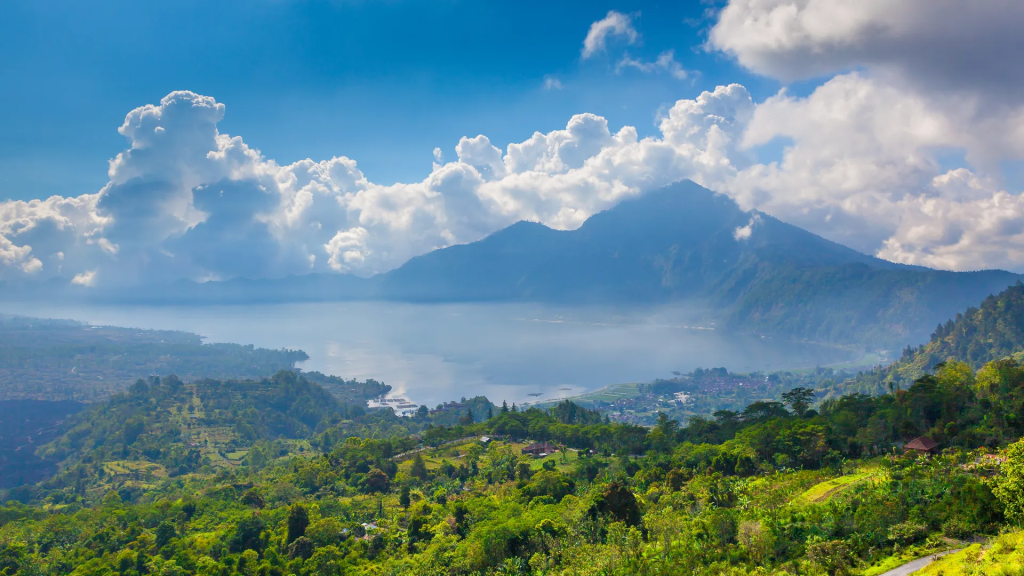
Mount Batur
On an island full of natural beauty, Mount Batur (or “Gunung Batur”) and its serene surroundings might be the most dramatic destination of all. The 5,600-foot volcanic marvel contains Bali’s largest crater lake—a splendid cycling site and slopes ripe for hiking with picturesque villages along the way. Hiking—or simply seeing—Mount Batur is an essential Bali to-do. Be vigilant about monitoring the news and local alerts about possible volcanic activity. If you want a better chance of reaching the peak without thick clouds obscuring the view, avoid the rainy season. The sunrise, as seen from the peak, is spectacular. Not for the faint of heart—or anyone who loathes early-morning wake-up calls—the ascent takes around two hours. But once you’ve reached the top, you might witness one of the most majestic mist-sheathed vistas you’ve ever seen.
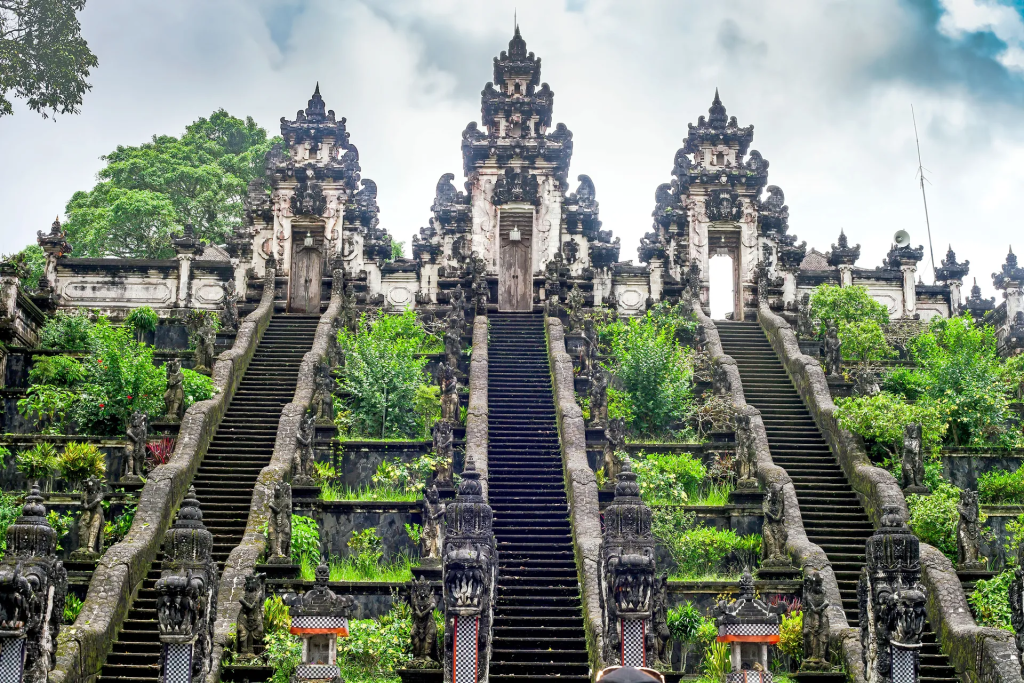
Pura Lempuyang Luhur
Located far from the tourist hubbub of Ubud, Lempuyang Temple is a sacred seven-temple complex in eastern Bali best known for the Gateway to Heaven that perfectly frames formidable Mount Agung, the island’s tallest peak. The entrance fee is around $7 and you’ll need a sarong (also available on loan) and a $3.50 round-trip jeep shuttle up the steep mountainside—unless you’re brazen enough to walk. First, arrive before 9 a.m. or you’ll have to contend with tourists waiting to snap pictures. Then, be ready to hand over your camera to a designated cameraperson and confirm your poses in advance—you’ll have just a few seconds for your shots. The other temples are also worth exploring, and you can easily spend two hours strolling the mountainous paths to see them all. This is one of the most majestic sights in Bali—come for sunrise to get the best, least crowded results—and it’s also a significant Hindu temple.

Tukad Cepung Waterfall
Tukad Cepung, located in East Bali, is one of the island’s most photogenic falls, a small site leaving a major impression on travelers willing to scale the numerous steps and crossings to see it. While there are prettier, larger, and less touristy waterfalls up in northern Bali, Tukad Cepung is one of the closest to Ubud and the popular beach towns. Everyone’s come for the plunging attraction they’ve likely seen on social media: a trickling, wide-bodied curtain of water inside a dark circular canyon wall. The waterfall is at its most magical in the morning and midday hours, as sun rays illuminate the scene creating prisms of light. Tukad Cepung’s main draw is the natural light show which occurs in the earlier portion of the day. Arrive mid- to late morning for less crowded encounters, as snap-happy tourists start to flood the area by noon.
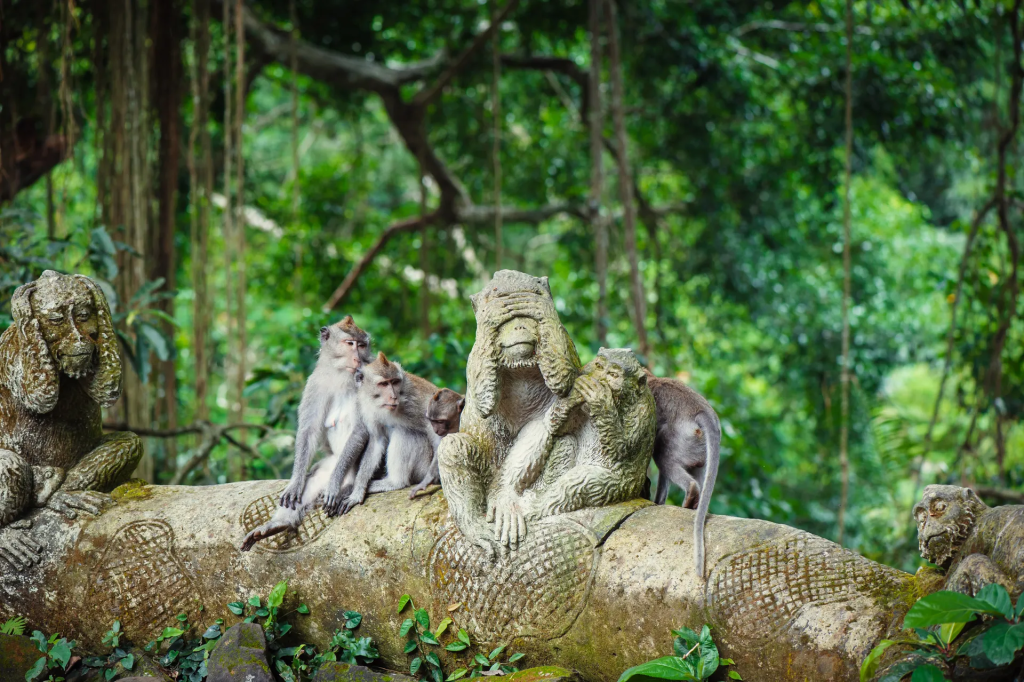
Ubud Monkey Forest
This tourist magnet might look like an open-air zoo attraction, but it’s actually a holy site with a 1000-plus band of long-tailed Balinese macaques in their natural habitat. As cantankerous as some of the monkeys can be—your dangling jewelry, bags, and conspicuous food will invite aggressive sticky fingers—the primates are considered sacred by Balinese Hindus who come to pray in the complex’s three ancient temples. Roam around the 31-acre forest and you’ll find scores of monkeys—playing, resting, fighting, or scheming to snatch bananas or sunglasses from tourists. Otherwise, the three 14th-century temples are a lovely sight, as are the moss-covered monkey sculptures throughout the sanctuary. Tall banyan and nutmeg treetops provide ample shade, and paths are smoothly paved. The sanctuary staff does a great job to ensure a safe, enjoyable visit.
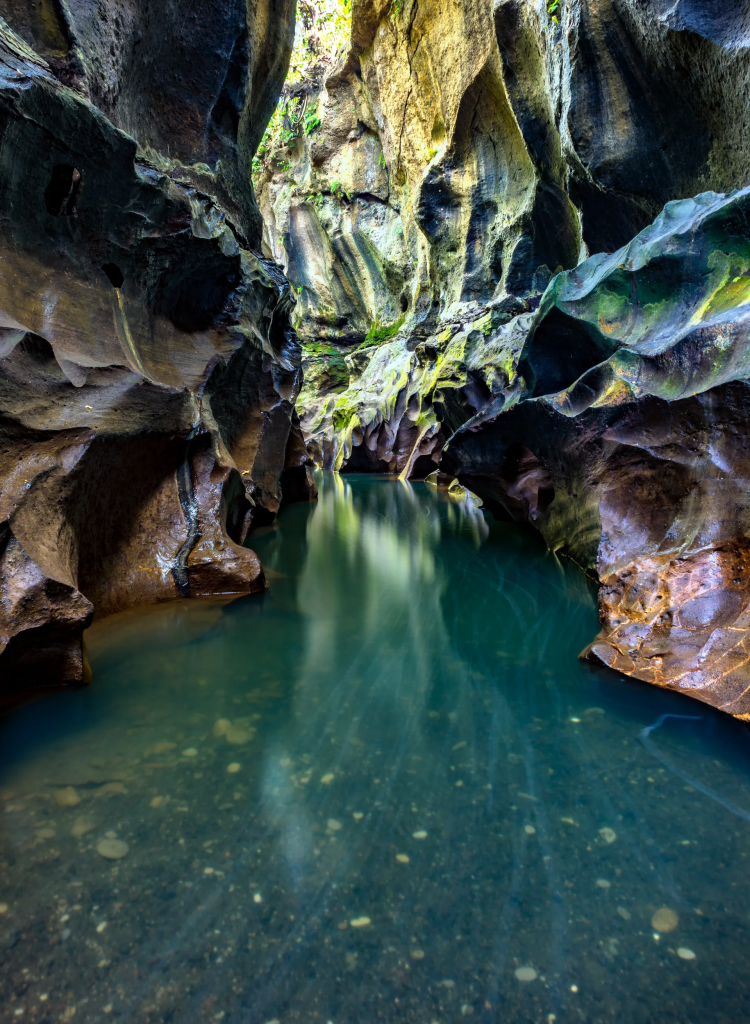
Beji Guwang Hidden Canyon
Beji Guwang Hidden Canyon, a Sukawati-based ravine and sacred Balinese site, feels hidden in plain sight. Beyond the ticketed entrance is a series of mid-rise canyons lining the Oos River: prepare to climb, wade, swim, and scale your way through a rocky-tropical landscape not seen anywhere else on the island. A bonus? Touring hordes have yet to discover it. The mesmerizing, sculpted-by-erosion stone walls are even more magnificent with sunlight and shadow play. Leave it to the competent tour guides to take your snaps at all the right angles. Beji Guwang Hidden Canyon is a plum choice for travelers who need more than surfing to get their blood pumping. Prices start at around $15 for an individual (it’s less expensive with two or more people) and includes entry, a local guide for up to four guests, a bottle of water, bath and face towels, and lockers and showers.
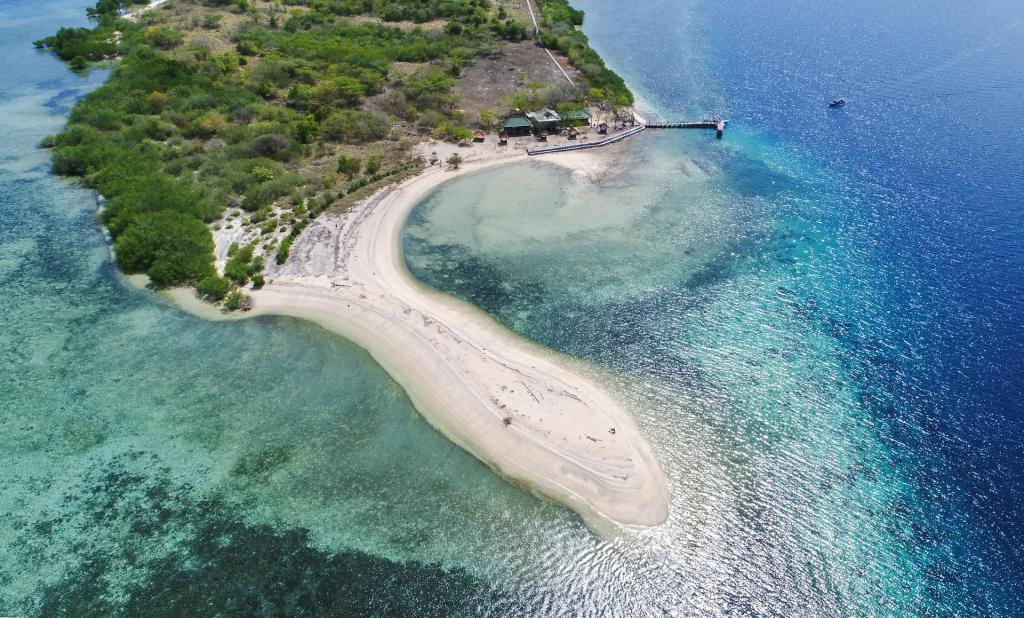
Menjangan Island
Making up part of the West Bali National Park, Menjangan Island is a tiny, less-trodden gem eight miles off the northwestern coast of Bali. Nicknamed “Deer Island” for the numerous Javan rusa deer ambling about, it’s uncrowded and largely uninhabited, and its fringing coral reefs make it among the best diving and snorkeling spots in Greater Bali. What you’ll like best on the island depends on whether you prefer your sightseeing above ground or below the water. On land, wild but approachable deer sashay around the island and take chest-high dips in the beach water. Plan to make a whole day of it. There are several tour packages for Menjangan Island, including a few 12-hour ones that offer convenient door-to-door transfers, and they tend to cover the park permit and guide. The commitment required is best justified for travelers willing to don snorkel gear or a scuba tank.
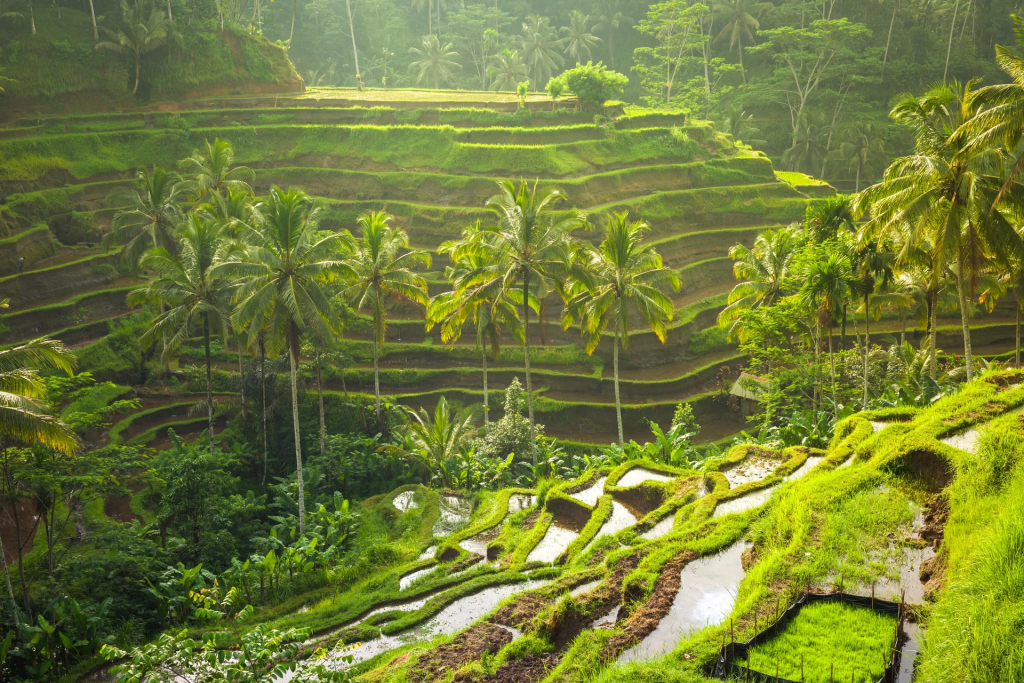
Tegalalang Rice Terrace
Tegalalang Rice Terrace, 20 minutes north of Ubud, is one of Bali’s most photogenic—and most-visited—destinations. The UNESCO World Heritage Site contains wide, undulating layers of rice paddies, kept alive by an ancient, sophisticated irrigation system and farmers who tend the terraces just as previous generations have done for millennia. You can explore this area freely. Take a short stroll or navigate its entire length; descend to some of the lower slopes (if the farmers don’t mind) for a different vantage point; or grab a seat at an open-air cafe when you need a break. It won’t be hard to find the famed “Love Bali” swing; the swarm of picture-takers gives it away. This is one of Bali’s most picturesque landscapes and, as such, you’ll have to deal with the crowds. Arrive before 9 a.m. You’ll also find farmers asking for donations (if you choose to oblige, give no more than 10,000 rupiah—just under a dollar), and pestering hawkers.
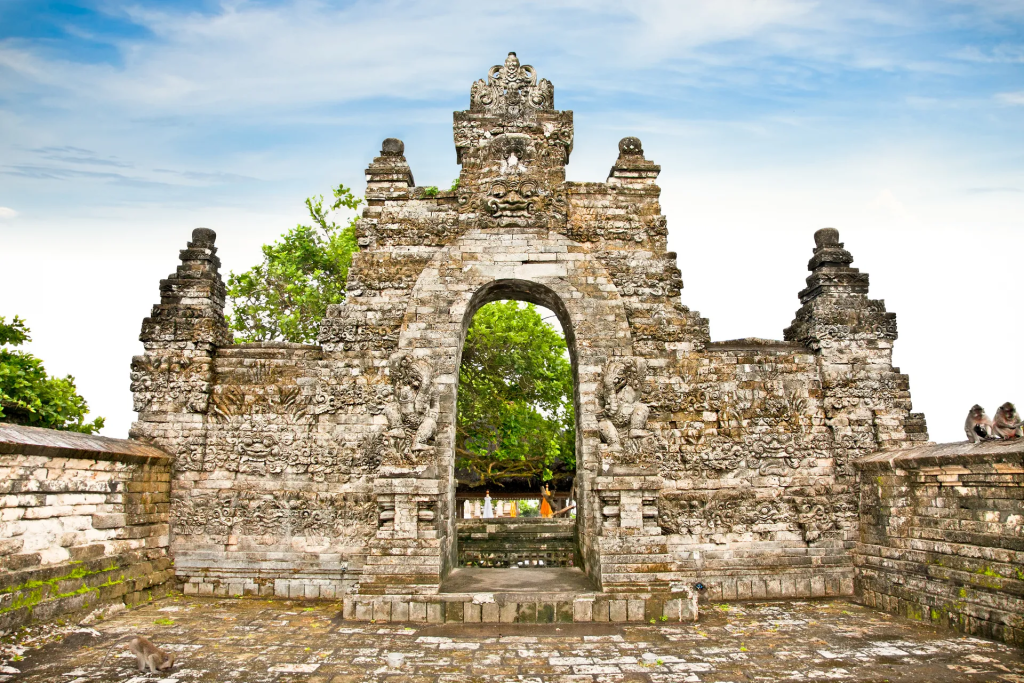
Uluwatu Temple
Uluwatu Temple, in Bali’s extreme south in Pecatu Village, is a crucial ancient site that has protected Hindu islanders from evil spirits since 900 AD. Its location is the main draw for tourists: some 230 feet up on a precipitous cliff edge, with the powerful waves of Uluwatu Beach lapping at its base. The sunsets here are among Bali’s most sensational. As an add-on, the daily kecak dance performances (about $10), with chants, costumed performances, and rings of fire, make the setting even more enchanting. The temple itself is rather tiny, especially in comparison to the massive cliffs and sea, but the scene as a whole is glorious. The sunset kecak is special, but the amphitheater-like space is regularly packed beyond capacity; arrive 45 minutes early for the best seats. Watch out for the wild monkeys who are quick to snatch belongings from inattentive tourists.
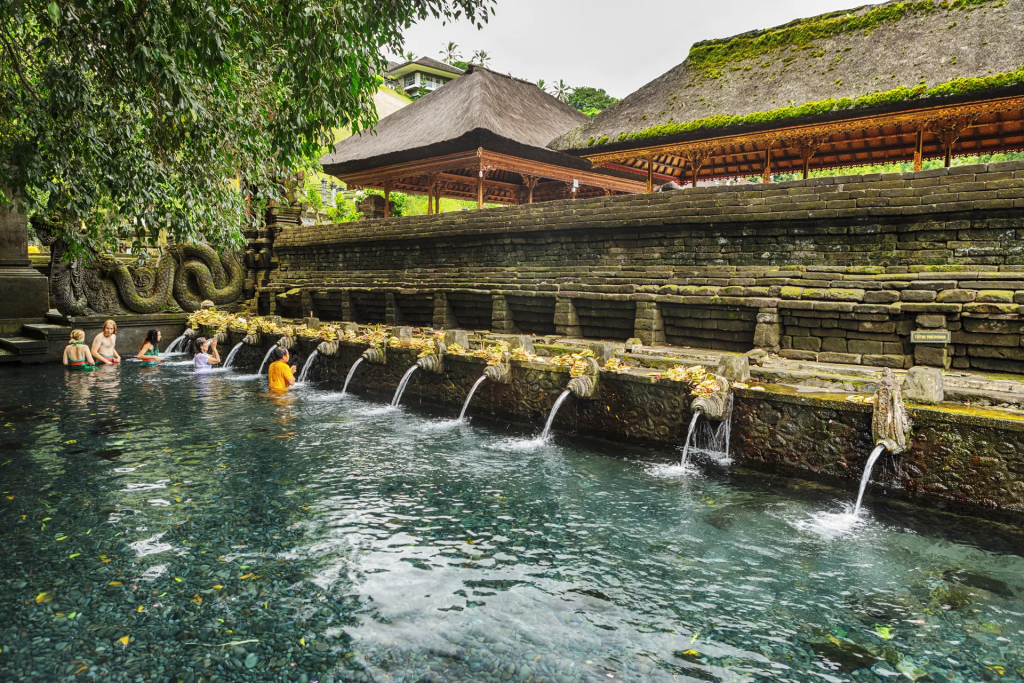
Tirta Empul
Tirta Empul (“Holy Spring”), an important sacred water temple for more than 1,000 years, contains a warren of shrines, gates, courtyards, and purification pools where Balinese Hindus “baptize” themselves underneath a succession of waterspouts. Equally popular with travelers, the temple commands a 50,000 rupiah (about $3) entry fee and the wearing of a sarong. Yes, there are crowds, but the ornate temples, exquisite stone statues of the divine, and sacred bathing pools are inspiring nonetheless. Want to immerse yourself (literally) in the holy Tirta Empul experience? Bring an additional change of clothes and swimwear to partake in the water ritual; helpful temple staff are on-hand to explain the protocol if you came without a guide. Despite its popularity, Tirta Empul contains a rare spiritual heft not seen in other Balinese temples. Come to feel moved.

Banyumala Twin Waterfalls
Tucked deep in the lush North Bali highlands are the Banyumala Twin Waterfalls, a mighty pair of 11-story-tall falls that cascade into a natural pool. The far-out location—at least two hours from the main drags of Ubud and Seminyak—and the steep hike keep the crowds delightfully low. The waterfalls are the main draw. Take a cool, refreshing dip into the wide, shallow natural pools below them—depending on the season and the time of day, you might even have them to yourself. Once you arrive at the main car park, you’ll need to descend bamboo- and steel-railed steps for about 15 minutes to reach the main site. A walking stick will certainly come in handy when you’re navigating the steep, slippery, and uneven terrain. Pace yourself and wear sturdy footwear. This spot is perfect for anyone in search of Bali’s raw natural beauty—sans the typical tourist pack. Come early to maximize your time.

Thomas Beach
Thomas Beach, located in the south of Bali not far from Uluwatu, is a long, sprawling, white-sand beach flanked by willowy palm trees. It has managed to keep itself a well-guarded secret, drawing only the most curious travelers. Thomas Beach is simply stunning. The turquoise water is calm enough for swimming, which isn’t always the case in Bali, where the sea can be rough. And the creamy sand is soft enough to lie or stroll on. You can of course go barefoot, but the sand gets hot. There’s lots of room to spread out—bring a towel or rent a lounger and umbrella. This beach is great for people who want a stunning swimming spot with beautiful scenery and not too many crowds. The steps down to the beach put some visitors off—those who do manage them will find all the more space to spread out.

Tirta Gangga
Although Tirta Gangga ($3 entry), a former palace turned lavish water gardens, looks like it has existed for several centuries, it was conceived in 1946 by the royal Karangasem family. But its far-out east Bali location hasn’t stopped travelers from exploring its magical fountains, shrubs, sculptures, and flowers, or positioning themselves on the octagonal stepping stones and feeding the carp. There are also stone spring water pools and you can swim in one of them. The Tirta Gangga is a Balinese fantasyland—colorful blooms, tiered fountains, mythical statuettes, and ponds, all with the imposing Mount Agung in the backdrop. It’s definitely a mood-lifter. These gardens are a top choice for anyone who enjoy beautiful, imaginative landscapes. It’s at least two hours away from Ubud and Bali’s southern beach towns—the remote location is part of the allure—still, aim to arrive early in the morning to beat the crowds.
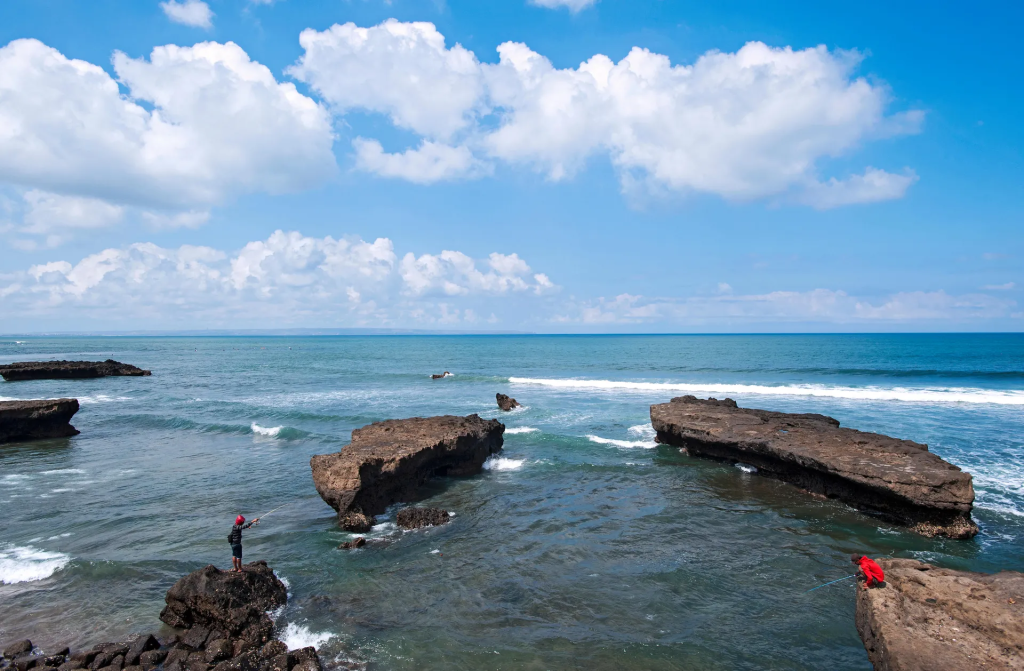
Echo Beach
Echo Beach’s immediate southern neighbor, Batu Bolong, shares a lot of attributes; among them, charcoal brown sand, stellar surf breaks, and bounteous eating and drinking options. But Bali’s Echo Beach feels less developed, and the waves are bigger and better for surf enthusiasts. Locals and an increasing number of tourists are congregating here more, but you’ll still have ample breathing space to lay, gaze, meander, or dip your toes in the water. Look for the Pantai Batu Mejan, a Hindu sea temple and, next door, the COMO Uma Canggu hotel, which hosts a hip, surfer-luxe beach club with delicious food and cocktails. If you’re irritated by the crowds and tourist traps of the other beaches in southern Bali, this up-and-coming stretch of sand will be a breath of fresh air—especially if you’re into surfing.
